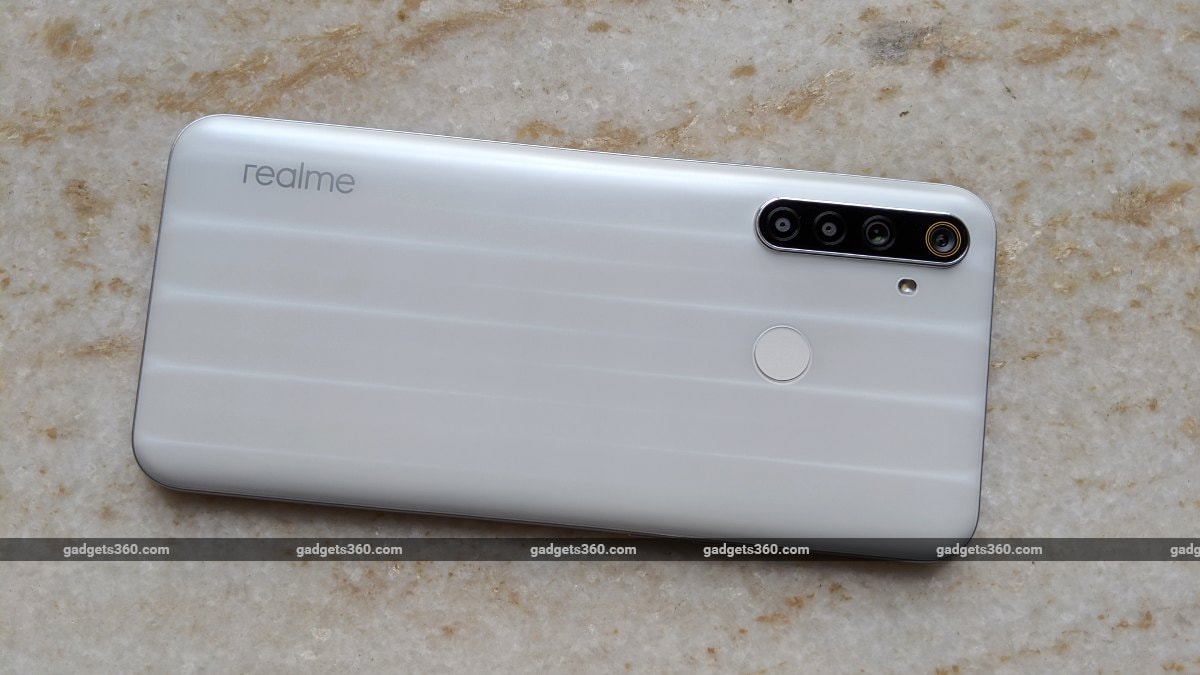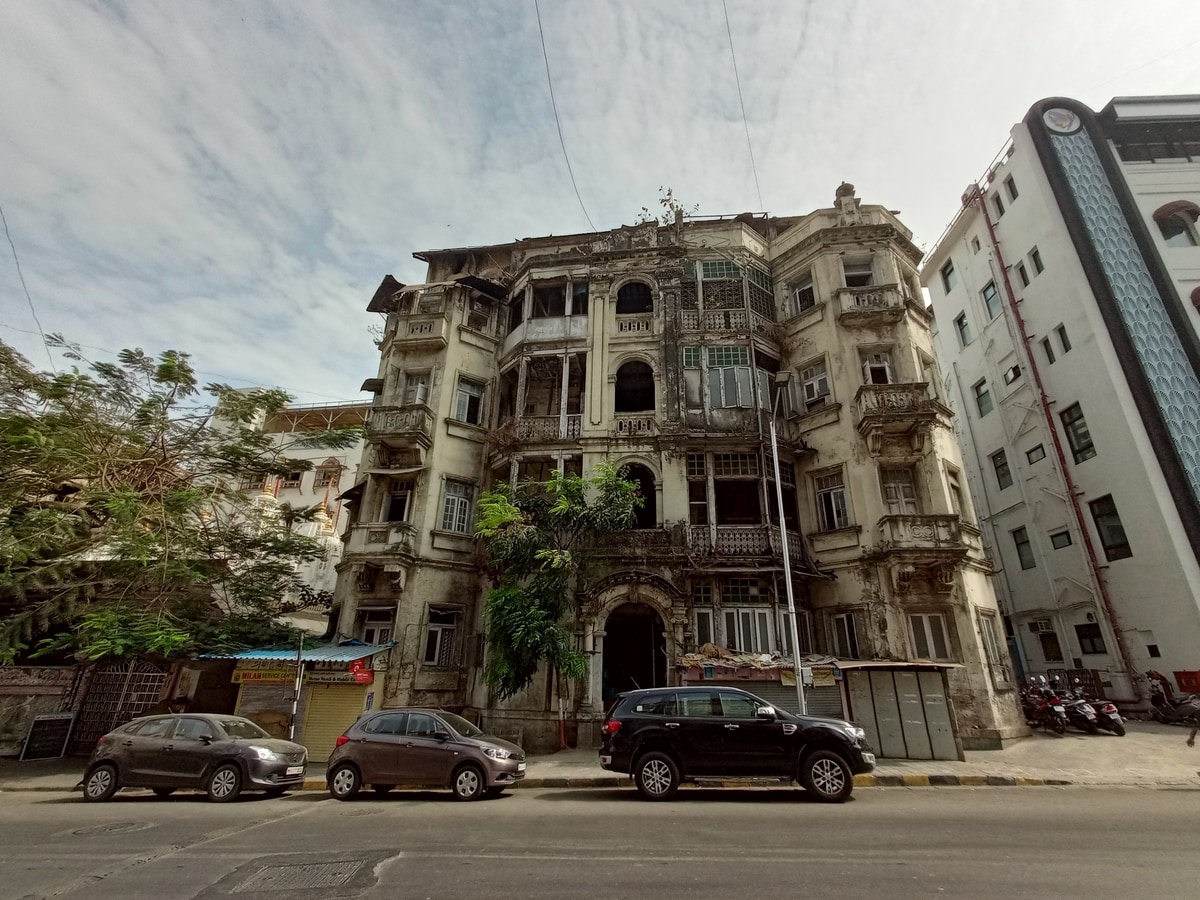Realme Narzo 10 Review | Technology News
Realme has launched the Narzo 10 and Narzo 10A smartphones to target young people, particularly those who value style and gaming performance above all else. The company wanted to create a new sub-brand to emphasise these features, and to create a separate personality for what would otherwise be simple low-cost phones. The Narzo 10 and Narzo 10A are both priced to meet specific targets, and they slot in below the Realme 6. Today, we’ll be reviewing the Narzo 10, which is the more expensive model of the two.
There aren’t many surprises to discover about this phone – Realme announced the Narzo 10 and Narzo 10A smartphones before the national lockdown went into effect, but was only able to actually launch them now because of the coronavirus imposed rules to enforce social distancing prevented any sale. In addition to that, the Narzo 10 is already sold as the Realme 6i in some other countries, with some India-specific touches.
We’re interested in seeing what Realme has come up with, and whether this is truly a budget gaming powerhouse that can take on the latest from Xiaomi and others.
Realme Narzo 10 design
Although this is a budget phone, Realme has come up with a rather premium-looking design for the rear. The Narzo 10 is available in That Green and That White (which in other countries are sold as Green Tea and White Milk). Both options feature a pattern of vertical pinstripes down the rear that seem to shift from side to side when you move this phone around under the light. It reminds us of the Onion and Garlic finishes of the Realme X Master Edition, and in fact they’ve all been created by the same Japanese designer, Naoto Fukasawa.
It isn’t garish at all, in like some of the gradients and patterns we’ve seen before, and still catches the eye. Our That White unit looks quite fresh and sophisticated, and if you aren’t a fan of the colour or pattern you can always use a case. We would have liked something different for the camera module though – Realme has recycled the same vertical strip in the upper left corner for multiple generations now.
The front of this phone is completely plain, with a waterdrop notch at the top of the screen and a somewhat thick chin below it. The white unit has a matte silver frame, while the green version will have a matching green one. The overall look is very slick for a budget smartphone.

The stripes on the rear appears to shift from side to side under the light
Thanks to its 20:9 aspect ratio screen, the Realme Narzo 10 is relatively tall and narrow, but it’s also 9mm thick and relatively hefty at 199g. It’s relatively easy to use and live with, and the upside of that weight is a 5000mAh battery – which we’ll get to shortly. We found it a bit hard to reach the top of the screen when using this phone with one hand. Thankfully, the back isn’t slippery at all.
Realme has used Gorilla Glass 3 for the display and there’s a pre-applied screen protector, but it doesn’t quite reach the edges of the glass, leaving the corners vulnerable. You do get a plastic case in the box, though.
The Narzo 10 has a fingerprint sensor on the back, which we found slightly out of reach. The power and volume buttons are well positioned on the right and left respectively. The removable tray has two Nano-SIM slots as well as a microSD card slot. We’re happy to see a USB Type-C port at the bottom, along with a 3.5mm audio socket and a single speaker.
The overall polish of the Realme Narzo 10 is pretty impressive, considering its price of just Rs. 11,999. It doesn’t come across as a budget phone, but then again the entire segment is highly competitive.

The screen protector doesn’t quite reach the edges of the front
Realme Narzo 10 specifications and software
The main attraction of this phone is its MediaTek Helio G80 SoC, which is meant to be targeted at gamers. The Helio G-series chips have powerful integrated graphics capabilities, and this will be our first experience with the G80 although others in the series have proven themselves in the past. It has two 2GHz ARM Cortex-A75 cores for power and six more Cortex A55 cores for efficiency. MediaTek states that it can dynamically manage the CPU, GPU and memory based on heat, power, and the demands of different usage scenarios.
Another interesting part of Realme’s Narzo strategy is to launch this phone in only one configuration, with no variants. You only get 4GB of RAM and 128GB of storage, both of which are relatively generous. We like this approach, since it avoids extra complication in the company’s already crowded lineup – there are already plenty of other options at nearby price points.
The 6.5-inch display has an HD+ 720×1600-pixel resolution. Some buyers might prefer a full-HD panel, and you can find those in other phones at this price level. For gaming though, a lower resolution means less stress on the GPU, so it might actually be an advantage.
The main reason for the Narzo 10’s weight is its 5000mAh battery which should be an advantage for users who don’t want to cut their gaming sessions short. 18W fast charging is supported and you get an 18W adapter in the box, which is good to see.

The power button is on the right, while the volume buttons and SIM tray are on the left
You won’t find many of the latest connectivity standards but we do have all the basics covered with Wi-Fi 802.11n, Bluetooth 5, and GPS. All the usual sensors are listed, including a gyroscope which will come in handy for gaming.
Realme ships this phone with Android 10 and version 1.0 of its Realme UI, which is similar to sister company Oppo’s ColorOS. It looks fairly fresh and includes major Android features such as Digital Wellbeing, but still has many customisations that will be familiar to users of Oppo phones. These include a Game Space tool that claims to boost performance, App Cloner to let you use multiple accounts, and various gestures.
You can use the Smart Sidebar from within any app to quickly multitask or launch actions. There are multiple gesture navigation options to choose from, but the stock Android 10 or 9 schemes are not among them. The calculator app can run windowed on top of other apps. The most interesting touch is that you can spoof your call history, messages, contacts, and calendar, so apps that try to read your personal information get useless junk instead.
On the downside, there’s a lot of bloatware even after choosing not to install a bunch of sponsored apps during the initial setup process. Thankfully the third-party apps are all removable. We also saw lots of spam notifications with misleading or sensational clickbait from the default Realme UI browser before we had even opened it once. The browser itself is full of ads and sadly it can’t be removed or disabled.

The four rear cameras are housed in a vertical pill-shaped protrusion
Realme Narzo 10 performance and battery life
We found the Narzo 10 pleasant enough in everyday use but we did face very occasional touch response issues, which made it seem as though the device didn’t want to do what we were asking it. We also noticed a bit of sluggishness when loading or quitting heavy apps. 4GB of RAM should be more than enough for most people’s needs though, and we had no trouble multitasking between everyday apps.
As for the brand new MediaTek Helio G80, we found benchmark performance that was superior to that of the Qualcomm Snapdragon 665 used in the Realme 5s (Review), but no match for the Snapdragon 720G found in some slightly more expensive phones. Surprisingly, the Helio G80 managed only slightly better scores than the Helio G70 used in the Realme C3 (Review) and the Narzo 10A. AnTuTu gave us 202,637 points, and Geekbench’s single-core and multi-core tests showed scores of 386 and 1,342 respectively. Graphics performance is supposed to be this SoC’s strong point, and it managed 1,796 points in 3DMark Sling Shot Unlimited, as well as 31fps and 17fps respectively in GFXBench’s Manhattan 3.1 and Car Chase scenes.
We found the display to be bright and crisp enough for gaming and video streaming. Colours aren’t the most vibrant, but once again we have to remind ourselves of the low price of the Realme Narzo 10. The single speaker is also just about okay for games and casual video watching, but you wouldn’t want to use it for music.
PUBG Mobile ran reasonably well at the High setting, and we found that gameplay was smooth. We did notice the upper rear and the top part of the frame getting quite toasty after less than five minutes, but a case should help people live with this. Asphalt 9: Legends was also enjoyable and we didn’t have trouble with stuttering or lag.
One of the Realme Narzo 10’s best assets is its 5000mAh battery. In our experience, the phone lasted through a full day of use, which included about an hour of playing games, streaming a full-length movie, and lots of casual Internet usage. We were left with over 30 percent on the battery indicator at the end of a full day. Our HD video loop test ran for an incredible 25 hours, 31 minutes. For many buyers, this will more than make up for the phone’s weight.

The Narzo 10 has a matte metallic frame and feels well built
Realme Narzo 10 cameras
We have a quad rear camera setup on this phone, which goes to show how easily a budget phone can be made to seem high-end. The 2-megapixel macro and 2-megapixel depth sensors are now pretty common across all low-cost phones, so you won’t feel as though you’re missing out on anything. However, they are of limited utility, as we’ve seen many times already. Macros are blotchy and rough, with the resolution limited to only 1600×1200 pixels, so this camera should be used more for fun than anything else.
Realme Narzo 10 macro photo sample (tap to see full size)
However, the primary 48-megapixel camera should not be dismissed so easily. Shots that we took under bright sunlight had lots of detail and exposures were well balanced. We did notice a little blurring and unsteady focus in several of our test samples, though. Close-ups were of course better defined than landscapes. This might not be the kind of camera that you’d want to rely on for capturing all your important moments, but it’s good for such a low-cost phone and will do for most casual purposes.
Realme Narzo 10 daytime standard (above) and wide-angle (below) photo samples (tap to see full size)
Even the 8-megapixel wide-angle camera delivers fairly decent shots as long as there’s good lighting, but there was definitely some distortion even towards the middle of the frame sometimes. We noticed duller colours and a yellower tone overall, though some compromises were to be expected.
Realme Narzo 10 daytime photo samples (tap to see full size)
The portrait mode looked like it was completely missing our subject when the effect was being processed for the phone’s viewfinder, but the saved images seemed more natural. Selfies were beatified by default and we didn’t like how aggressive the skin smoothening effect was. The Narzo 10 will also attempt to make your face slimmer and enlarge your eyes, and it takes a few taps to disable all of this. Selfies were just about okay, but we weren’t too impressed.
Night mode works with the primary as well as the wide-angle cameras, and it does make a slight difference if you manage to stand still for five seconds each time you take a shot. There wasn’t much detail, and quite a bit of noise in most of our test shots. The wide-angle camera should not be used at night because it simply cannot capture enough light to be useful. All in all though, we weren’t too disappointed with the Narzo 10’s low-light performance considering its price.
Realme Narzo 10 low-light (above) and Night Mode (below) photo samples (tap to see full size)
Video is not stabilised, and the quality was rough when we were walking while filming, but decent enough when we stood still. Colours and motion aren’t that great, but the Narzo 10 does well enough for casual use. You can’t switch cameras while recording video, but the wide-angle camera’s quality isn’t great and we wouldn’t want to use it much anyway. Video shot at night had very little detail.
The camera app isn’t one of our favourites – it takes at least three taps to get to the macro mode, and the wide-angle camera is activated by using a set of zoom buttons ranging from Wide to 5X, even though all zooming beyond 1X is done digitally through the primary camera. There’s scene recognition that did recognise cats and dogs, but it’s unclear what effect it has on the camera’s settings. In Macro mode we were told to stay 4cm from our subject for the best focus, but there were no prompts to move closer or farther so we had no idea when our positioning was optimal. Other modes include 48MP full-resolution, Expert, Slow-mo video, Panorama, and Timelapse.
Verdict
Realme has injected fresh energy into the budget smartphone market. The Narzo 10 isn’t quite an all-rounder but it will meet the requirements of many people, especially the target demographic of young gamers with tight budgets. We think a little more emphasis on camera quality would make people even happier, but Realme does offer phones only a little higher up the price ladder for those who need more. Performance is definitely improved compared to the previous generation of phones at this price level, and gaming is the natural application of a more powerful CPU.
Battery life is clearly the biggest strength of the Realme Narzo 10. It’s also quite attractive and well built. On the downside, the cameras aren’t that great, and we really dislike the software bloat and spam that we had to deal with.
The Narzo 10 is a very strong contender if your budget is capped at Rs. 12,000. If you can spend a little more, you might want to consider the Realme 6 (Review) and the Redmi Note 9 Pro (Review) instead.















